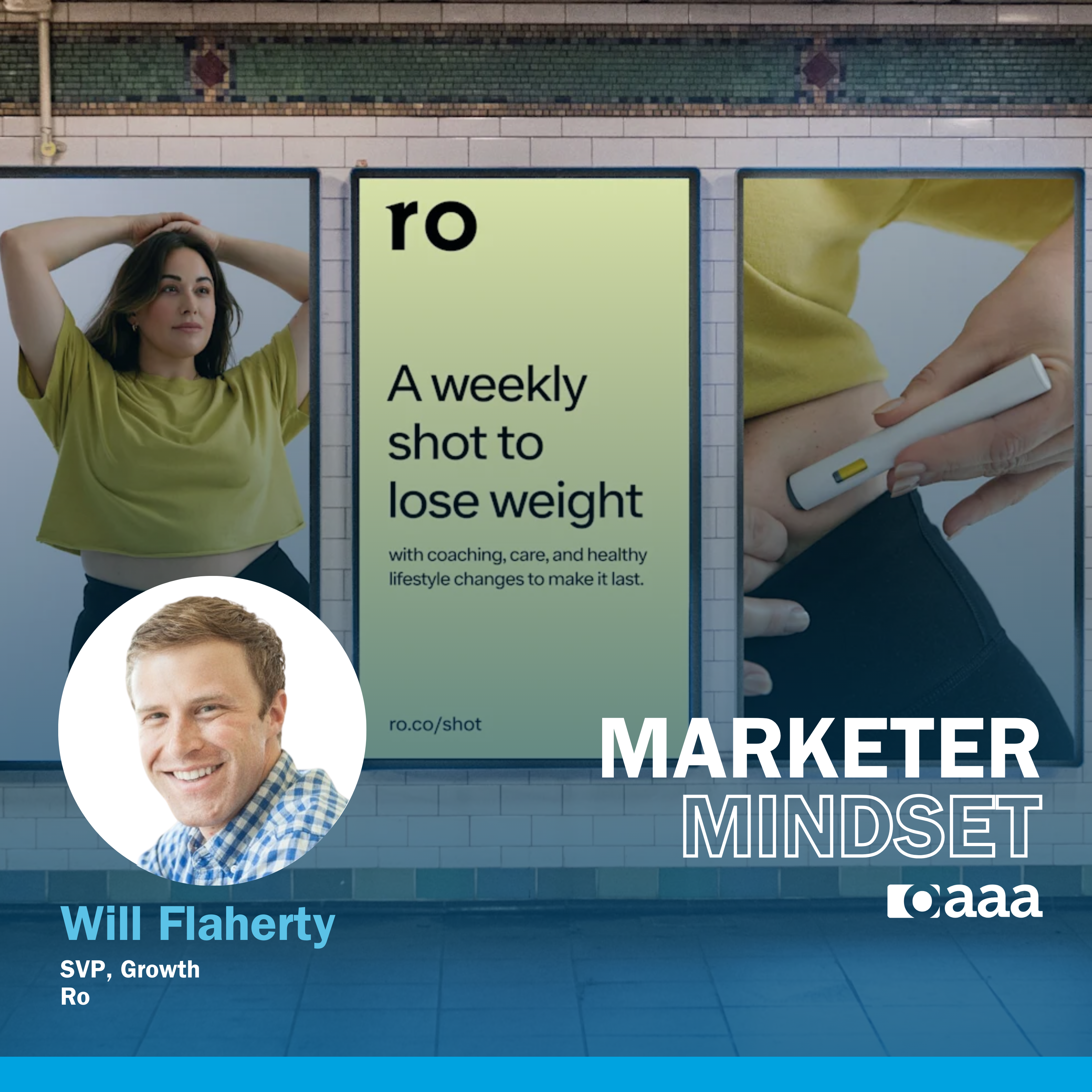
Every month, OAAA’s marketing team sits down with a brand marketer to discuss creativity in OOH, the role OOH plays in the media mix, and their perspective on the future of advertising. This month, Ro’s SVP, Growth shares their creative process, the importance of OOH in their media strategy, and how advertising continues to evolve.
Read Will’s Q&A in The Drum.
What role does out of home (OOH) play in your media mix?
Out of home (OOH) is a crucial part of Ro’s media mix because it provides high-impact visibility and trust-building in a way that digital ads often struggle to achieve. Our OOH placements consistently punch above their weight, leaving a more lasting impression on consumers compared to more ephemeral digital placements—meaning each OOH impression delivers greater impact.
The creative canvas of OOH allows us to tell vivid stories, enhance our media mix during seasonally important moments, and even drive PR and media coverage cycles that can only be triggered by an OOH placement.
How do you approach creativity in OOH advertising across formats?
Creativity in OOH is all about capturing attention instantly and delivering a clear, compelling message that cuts through the noise. We approach this in a few key ways:
Bold Imagery and Messaging: One of our core brand pillars is ensuring our visuals and messaging empower our members. Particularly when using models, we strive to convey a sense of confidence and control over one’s healthcare, reinforcing a message of power and agency.
OOH in the Daily Routine: We know that OOH is most effective when someone encounters an asset multiple times. That’s why we strategically place OOH within our target consumer’s daily routines—such as in high-footfall venues like transit hubs, malls, and city centers—ensuring repeated exposure within a single campaign flight. Our creative is then tailored to these specific placements for maximum relevance.
Design for the Camera: Some of our most successful OOH executions have been those that consumers photograph and share on social media. We intentionally design our OOH assets to be visually compelling and share-worthy, encouraging organic amplification through consumer-driven content.
3. What challenges do you face in balancing creativity and data in marketing?
We rely heavily on data to guide our OOH decisions—both in media selection and creative execution. We analyze user data to ensure we are selecting the right markets and even specific neighborhoods at the ZIP code level based on customer density.
When deciding on creative concepts, we lean into continuous testing of key messaging themes, value propositions, and visual directions through ongoing paid social campaigns. In some cases, we even mock up OOH concepts and test them as paid social assets to gather additional insights before finalizing creative.
That said, we always take a final step to ensure that our creative choices strike the right emotional balance, cutting through the clutter and driving memorability. While data-driven insights are critical, some of the most impactful campaigns stem from gut-driven, emotionally compelling storytelling. We never want to lose sight of that “right-brain” approach to creativity.
How do you see the future of advertising evolving?
The future of advertising is shifting toward AI-powered efficiency and a fundamental move to digital-first distribution over traditional linear marketing (e.g., TV, terrestrial radio). Key trends we’re leaning into include:
AI and Machine Learning: AI is making advertising more dynamic, allowing for predictive targeting, automated content creation, and real-time optimizations that enhance both efficiency and personalization. For our teams, AI hasn’t replaced human creativity—it has enhanced it, enabling our teams to work far more efficiently and effectively.
Measurement and Attribution: The increased shift of dollars into trackable digital channels—such as streaming TV, digital out of home (DOOH), and paid social—allows brands to gain a clearer understanding of all the consumer touchpoints on their path to purchase. This enables more sophisticated sequential marketing strategies, ensuring these channels work in harmony rather than in isolation.
The Rise of the Influencer Economy: The emergence of influencers across social, video, and audio platforms has created massive opportunities for brands to drive awareness and adoption of their services. Influencers are no longer just brand ambassadors—they’re content creators who can be central to both ad asset generation and distribution strategies.
In short, the future of advertising isn’t just about reaching consumers—it’s about meeting them where they are, providing real value, and making every interaction feel both personalized and meaningful.
Published: February 13, 2025